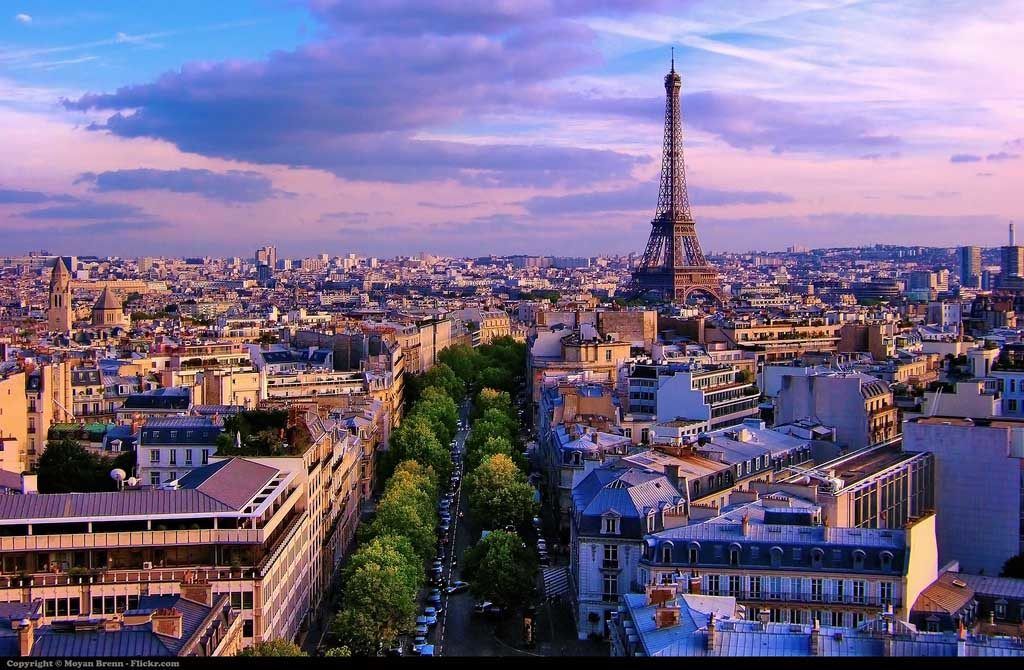
Today we’re going to have a history lesson, although quite recent history. Very recent, in fact.
It’s about something that happened in the French capital (hence the name of the post) that changed the world of wine forever. The so-called Judgement of Paris (not to be confused with the story from Greek mythology).
It all started in 1976, when a selection of eleven distinguished experts were asked to compare, in a blind tasting, some of the best French wines with various examples from California.
Because, back then, France was, indisputably, the producer of the finest wines of the known world.
Therefore, it was completely unexpected when each and every one of the judges (nine of whom were French) gave the best scores to the wines from the United States.
In fact, you could go so far as to say that four decades later, the French wine industry has still not recovered completely from the blow.

Back then, the immediate response was that it was all down to chance and no greater importance was given to the subject. But it was an insufficient explanation, and both the English wine merchant, Steven Spurrier, who had organized the challenge and the Gallic tasters present in the competition received death threats.
It was such a crushing defeat that it left the whole world perplexed.
To add insult to injury, the tasting was repeated on its 30th anniversary in 2006, with the same vintages, and the results were unchanged.
Although, these days, Napa is no longer a minor backwater and France is hardly untouchable.
But going back to that day, in 1976, of the famous tasting in Paris, we should point out that it took place on the 24th May in the covered terrace of the Hotel Intercontinental.
Spurrier, the influential owner of a wine shop in the city centre, along with a wine school, had been pleasantly surprised for some time by the exceptional quality of the wines that were coming out of California. Wines that were almost unknown by European – and above all, French – consumers.
Therefore, he decided to bring together a select group of judges (for example, Odette Kahn, who was director of the “La Revue du Vin de France”, a prestigious sommelier and owner of one of France’s most fashionable restaurants at the time.)
Something that was never in question, we should point out, was the quality of the jury that was selected.
So now we have an organiser, a location and experts to evaluate, it is time to talk about the wines that had to step up to the plate, which were none other than the absolute aristocracy of white wines from Burgundy and red wines from Bordeaux, against Californian Chardonnays and Cabernet Sauvignon.
Beforehand, the competition was seen to be so unequal that the jury made the most unfortunate derogatory comments during the tasting, attributing the wines that were no more than power to California, and the wines that showed some complexity – above all through the use of oak – to France.
It turned out to be completely the other way round, so much so that it is said that a member of the jury wanted to change his notes afterwards. There were accusations of rigging of the results, but the fact is, in 2006, under the glare of the cameras, history repeated itself and this time the world was kept fully informed.
The 1976 results had a double interpretation, firstly that there were world class wines coming out of non-European countries and France had to be somewhat self-critical as its wines were no longer better than those of other countries.
In Europe, although it now seems incredible, France had become complacent in its belief in its status as Italy had some real problems, as far as hygiene and quality control (in 1986, a mixture of Piedmont wine and methanol claimed the lives of several people) and aside from Rioja, Sherry and Vega Sicilia the rest of Spanish wine was fairly grim.
Therefore this tasting was crucial in giving confidence to New World wines (the Americas, Oceania, and now also South Africa).

North Americans started to buy home grown wines, with the creation of prohibitively priced collectors’ wines that had previously been the exclusive domain of European wine regions.
In fact, to give a specific example, in 1979, one of the most famous and lucrative associations in the history of wine was formed, led by Robert Mondavi (USA) with the highly prestigious Rothschild family to create, the now legendary “Opus One“.
And this was just the start.
What started as a tasting designed to show supremacy ended up driving three continents to make quality wines and those who already made it to make major changes so as not be left out of step.
It changed everything.
Oh! And the results of the tasting in 1976 in terms of the five top wines in each category were the following:
CHARDONNAY
Chateau Montelena 1973 (USA) 132 pts
Meursault, Charmes 1973 (Francia) 126,5 pts
Chalone Vineyard 1974 (USA) 121 pts
Spring Mountain 1973 (USA) 104 pts
Beaune, Clos de Mouches 1973 (Francia) 101 pts
CABERNET SAUVIGNON
Stag´s Leap Wine Cellars 1973 (USA) 127,5 pts
Mouton Rothschild 1970 (Francia) 126 pts
Haut-Brion 1970 (Francia) 125,5 pts
Château Montrose 1970 (Francia) 122 pts
Ridge Monte Bello 1971 (USA) 103,5 pts














